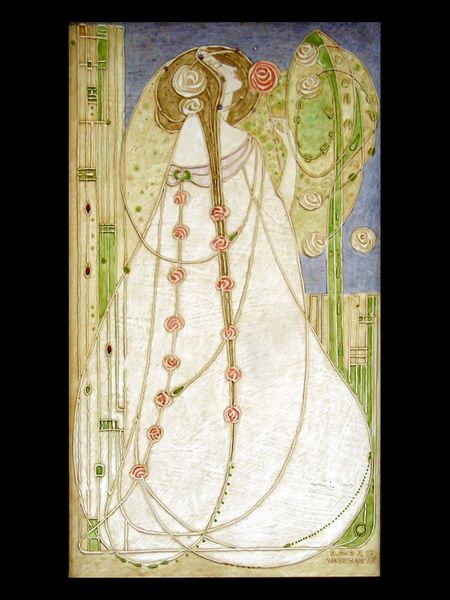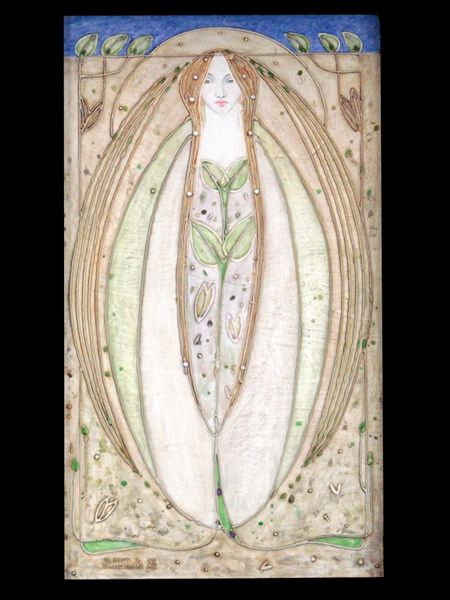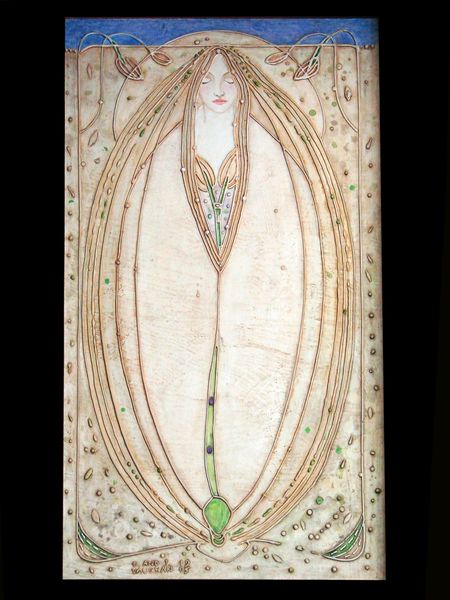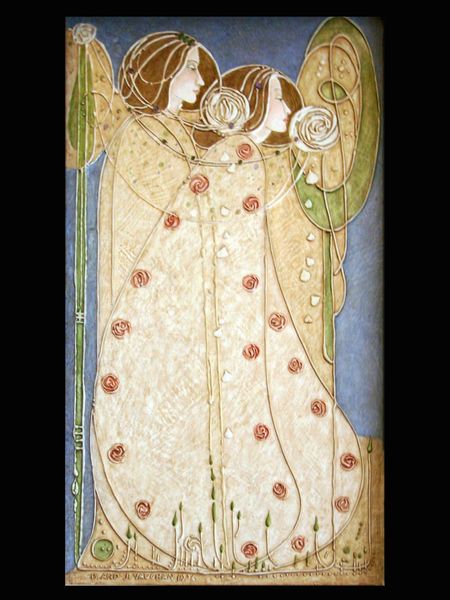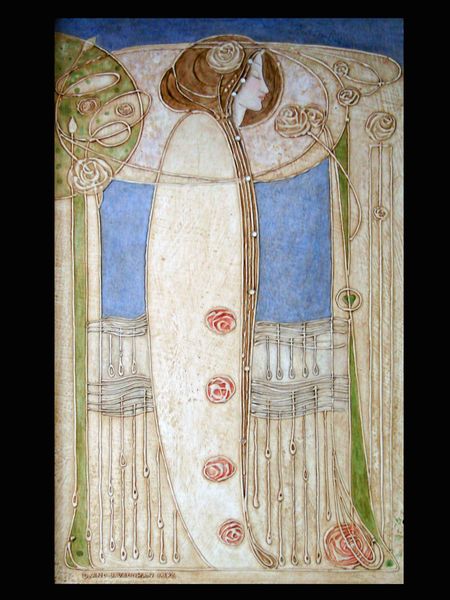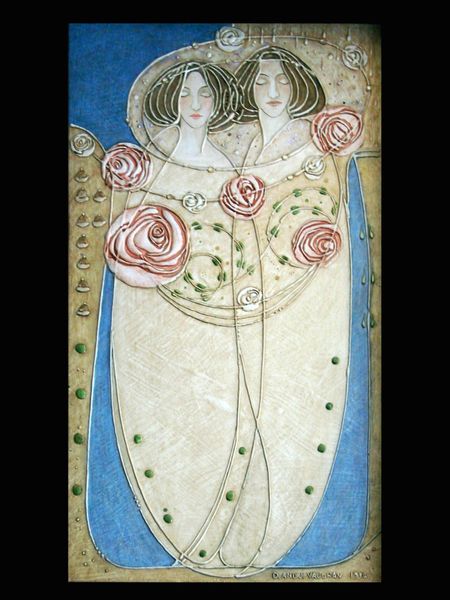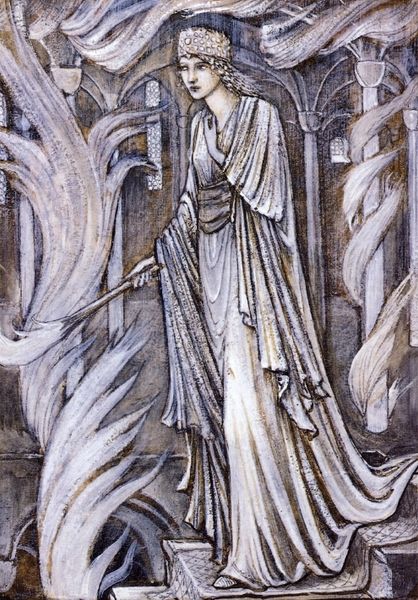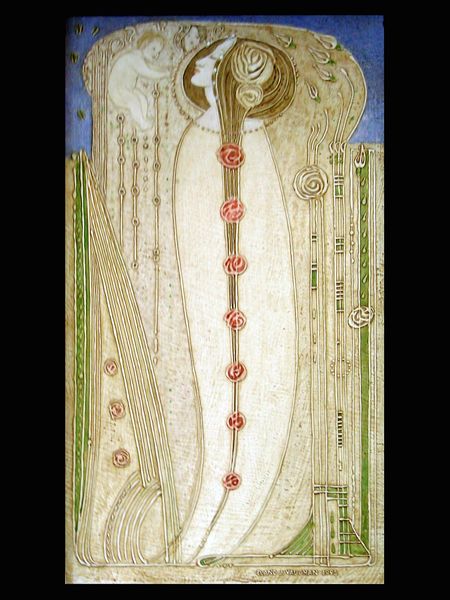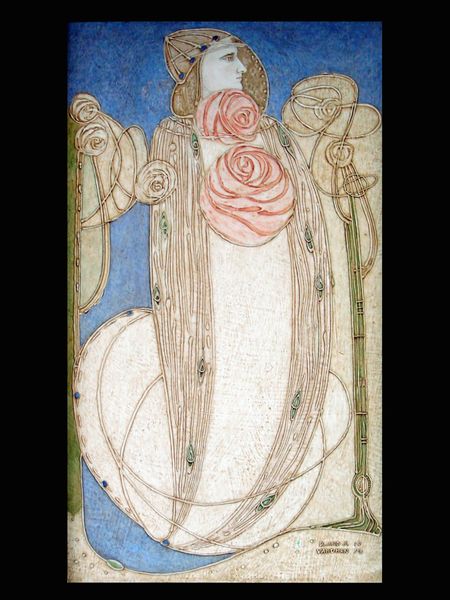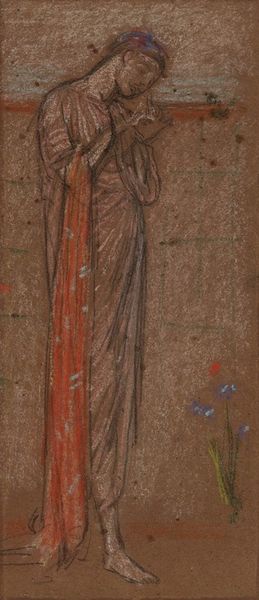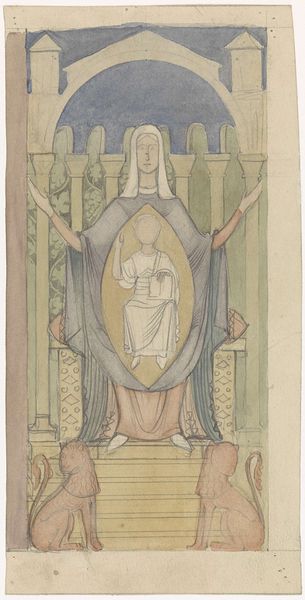
drawing, mixed-media, paper, pen
#
portrait
#
drawing
#
mixed-media
#
art-nouveau
#
geometric composition
#
glasgow-school
#
figuration
#
paper
#
geometric pattern
#
tile art
#
geometric
#
line
#
symbolism
#
pen
#
decorative-art
Copyright: Public domain
Editor: This is “Décor de la salle à manger (House for an art lover, Glasgow),” a mixed-media drawing from 1901 by Charles Rennie Mackintosh. There’s a striking flatness to the figure, and she almost blends into the background’s geometric patterns. How do you interpret this work? Curator: This piece feels very personal. Considering the time, the figure could be seen as a statement on the "New Woman," rising at the turn of the century, one who advocated for her own social, political, and artistic expression. But how much autonomy did women *really* have in creating spaces for themselves, both physically and metaphorically? Is Mackintosh celebrating her, or idealizing her? Editor: That’s interesting – the figure as a statement! I hadn't thought of it that way. I was stuck on how decorative it is, almost like wallpaper. Curator: Exactly! The “wallpaper” IS the point. Consider the context: Mackintosh designed this for a "House for an Art Lover." This wasn’t just decoration; it was intended to create a holistic, immersive environment. Do you think the figure becomes subservient to the decorative program, or does her presence subvert it? Editor: I see what you mean… she holds her own against the geometric shapes. I think. It feels like a collaboration, like a push and pull. Curator: A push and pull - nicely put. Art Nouveau often plays with the tensions between ornamentation and representation. And think about it, too – could the image reflect on art existing outside the establishment? Editor: So, it makes you think about where and how we allow women’s expression, as artists and even more broadly in society? Curator: Yes, where *do* we permit—or confine—women's presence? I think this drawing opens a fascinating window onto these ongoing debates. Editor: Definitely given me a lot to consider when I look at other works from that period, and even beyond. Thanks!
Comments
No comments
Be the first to comment and join the conversation on the ultimate creative platform.
